Earlier this year, my colleague Liz and I were talking – as I’m sure the staff of every academic library’s communications team have at some point or another – about the most-valuable survival skills for a post-apocalyptic world. Once it’s time to rebuild society, we probably don’t have much need for computer programmers, magicians, or social media experts, and the value of librarians is tertiary, so we decided that we needed to learn some new skills in order to improve our quality of life. You know, after the radioactive dust has settled/zombies are under control/firestorm has ceased/disease has passed.
Obviously we’ll need food, for which we’ll need farmers. But it seemed to us that anybody can learn to plant and harvest crops: we’ve all grown food in our gardens and greenhouses before… and there’s a far more-comfortable position to be had being the person who makes the tools for the farmers. And the builders, and the woodcutters, and the soldiers, and so on.
The correct career choice for the post-apocalyptic world is… blacksmith.
We arrived at the Avoncroft Museum, near Bromsgrove, early on Saturday morning. It looked to still be closed, but I asked a conveniently-nearby man, who had that certain look of a blacksmith, if he was the blacksmith, and the responded affirmatively. Liz and I followed him down through the grounds of the museum, between expansive model train layouts and the National Telephone Kiosk Collection (of course that’s a thing), to his little forge.

The smith gave us a brief tour, showing us the different parts of the hearth, the (140-year old) anvil, the slack tub, and so on, then went outside to gather up some kindling so that he could get a fire going.
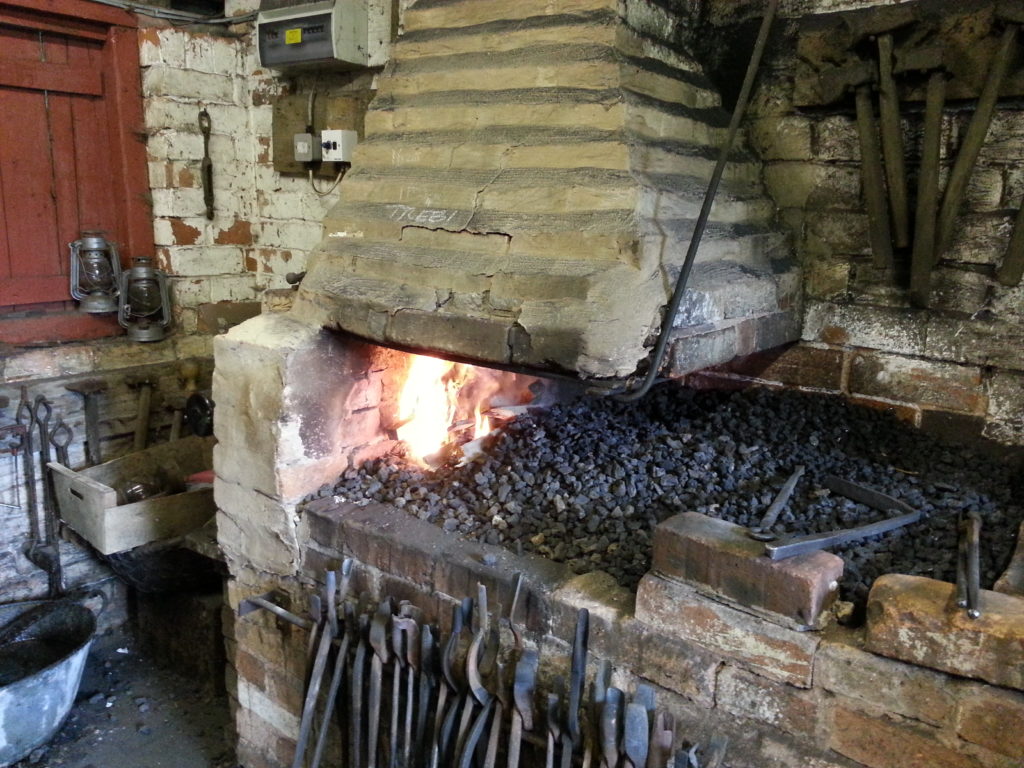
Then, he showed us what we’d be making today: a fire poker (“here’s one I made earlier”). He pointed out the different elements of the work: the broadened tip with its sharp point, the tapered end and stem, the decorative twist, and the hook at the top. This, he said, represented the majority of the basic techniques of traditional forging (except for fire welding): upsetting, drawing out, and bending.
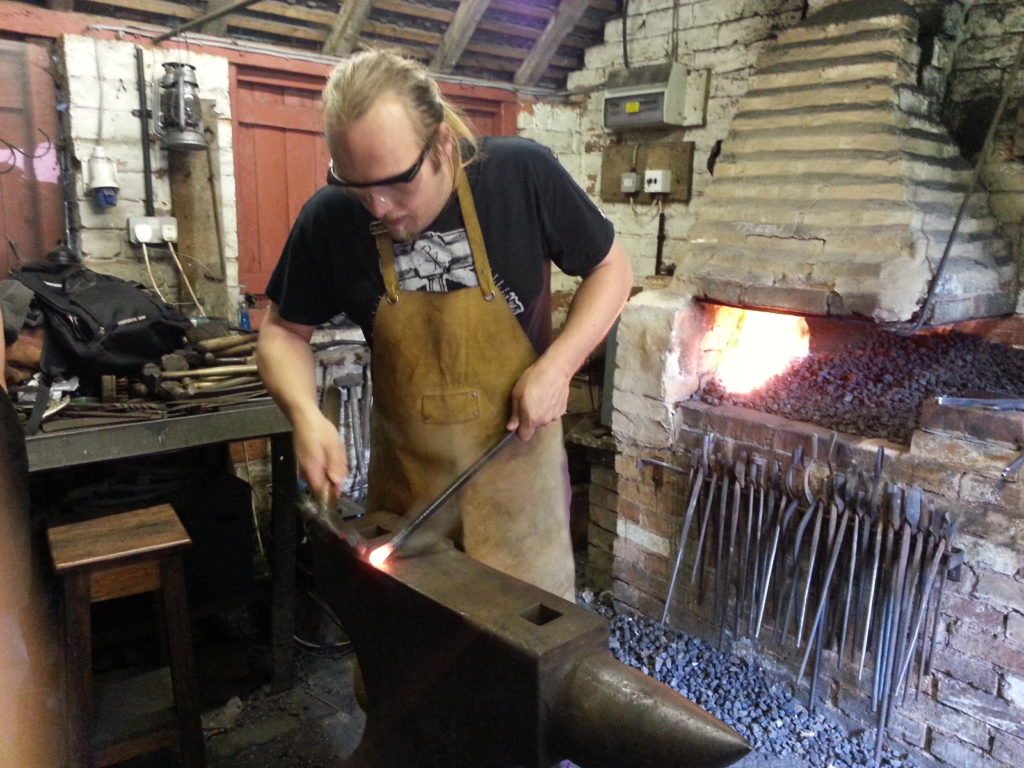
The talents of a blacksmith are actually quite broad and complex. There’s the ability to determine the heat (and thus malleability) of a metal by its colour (which in turn is affected by the type of metal: light steel, wrought iron, aluminium, brass etc. all have different thermal characteristics). Then there’s the skill required in accurately positioning and moving the metal, and the vision required to appreciate how it’ll behave when it’s more-or-less plasticine. And that’s without mentioning the physical strength that’s needed: forge-temperature iron turns out to be only a little more-flexible than cold iron, and it takes quite a wallop to make the impact you need… and all while trying to maintain the control you require to shape it the way you’re looking to.
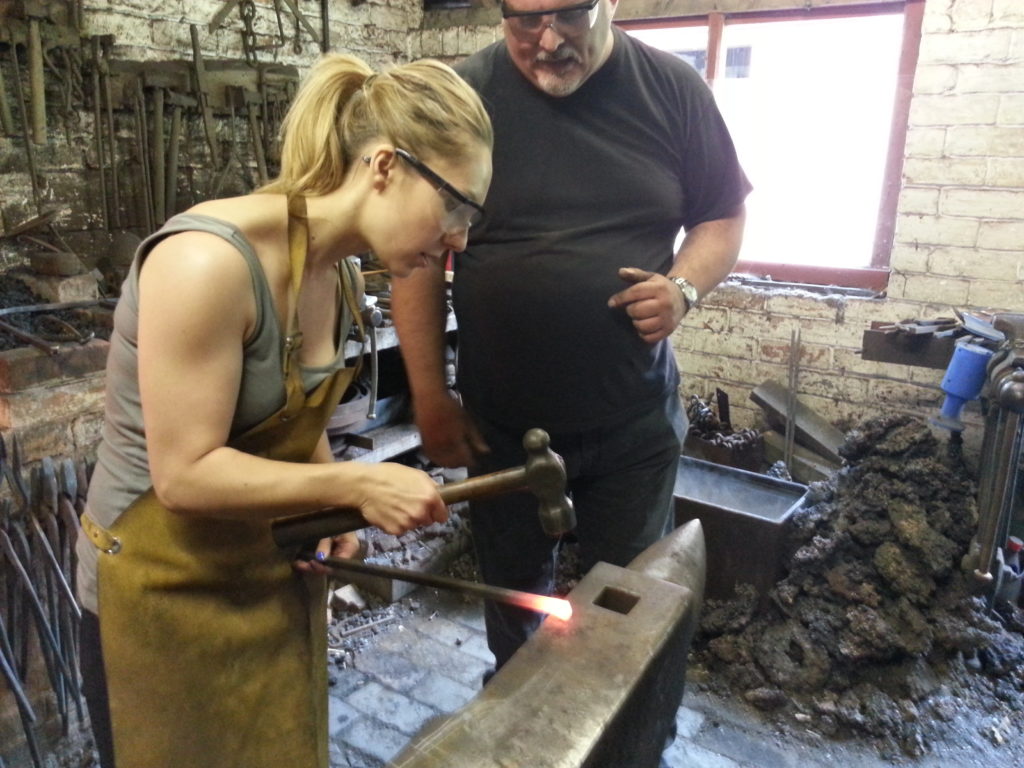
Something quite magical about the process, for me, was that the work we were doing used effectively all of the same tools and techniques that have been practiced by blacksmiths for at least 3000 years. With only three exceptions – the striplights over our heads (rather than lanterns – although the blacksmith did have a good number of those around too!), the electric fan that pumped air into the hearth (rather than a nine-year-old boy pumping the bellows) and the angle grinder that the blacksmith used initially to cut us each off a chunk of steel to work with – what we were doing wouldn’t have looked remotely out-of-place to a blacksmith of ancient Rome or Greece. Well: except for letting a woman work metal, I suppose.
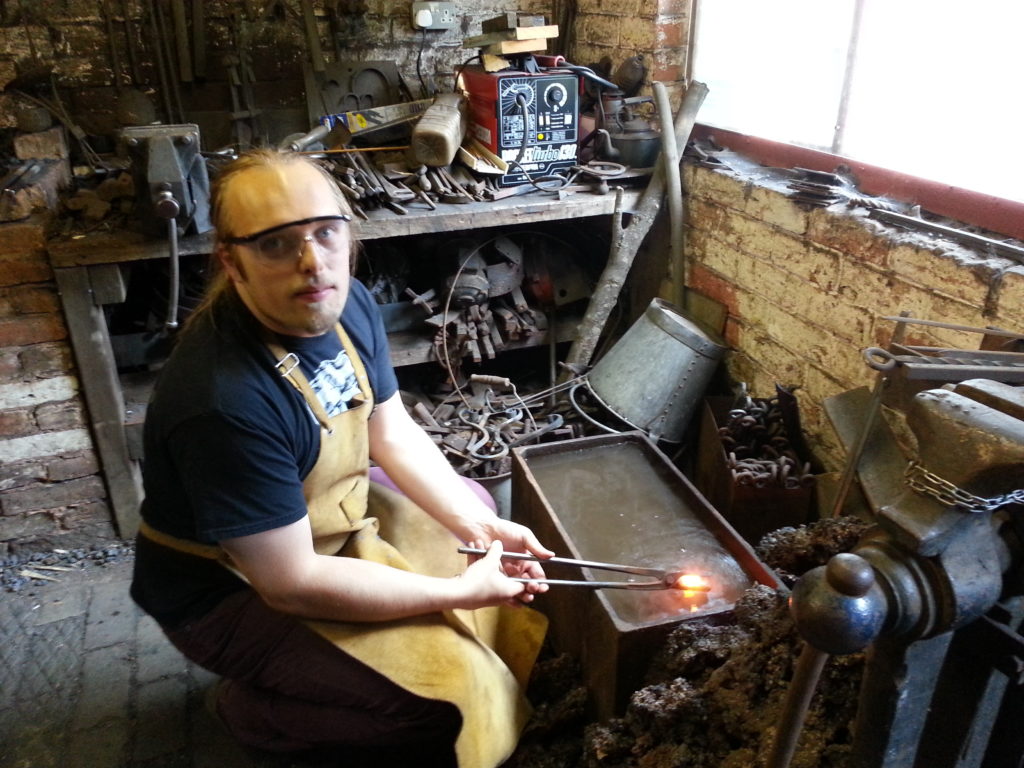
Twelve hours later, Liz and I left – pokers in hand and ready to fight off any zombies we came across! – completely exhausted. We’d each gotten a few small burns and some memorable aches in our arms and backs, but we’d succeeded in the tiny first step of our plan to make ourselves indispensable after the apocalypse happens. In nearby Bromsgrove, we each devoured half of a pizza, then finally made our way to our respective homes.
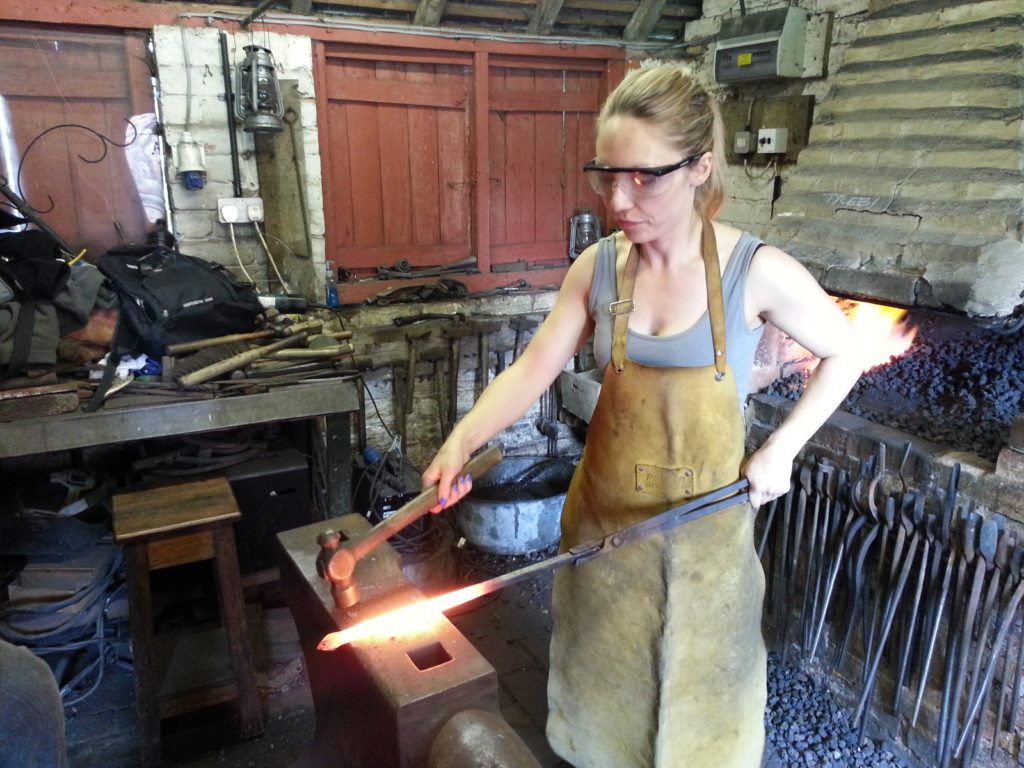
Would I ever be a blacksmith by choice? Outside of an apocalypse, no: having heard the war stories (and seen the injuries) of our blacksmith tutor, I’d rather stick to safer activities, like skydiving. But if you’ve got the inclination to try your hand at blacksmithing, I’d thoroughly recommend that you give it a go, and the smith at Avoncroft is totally worthy of your attention: go make something!
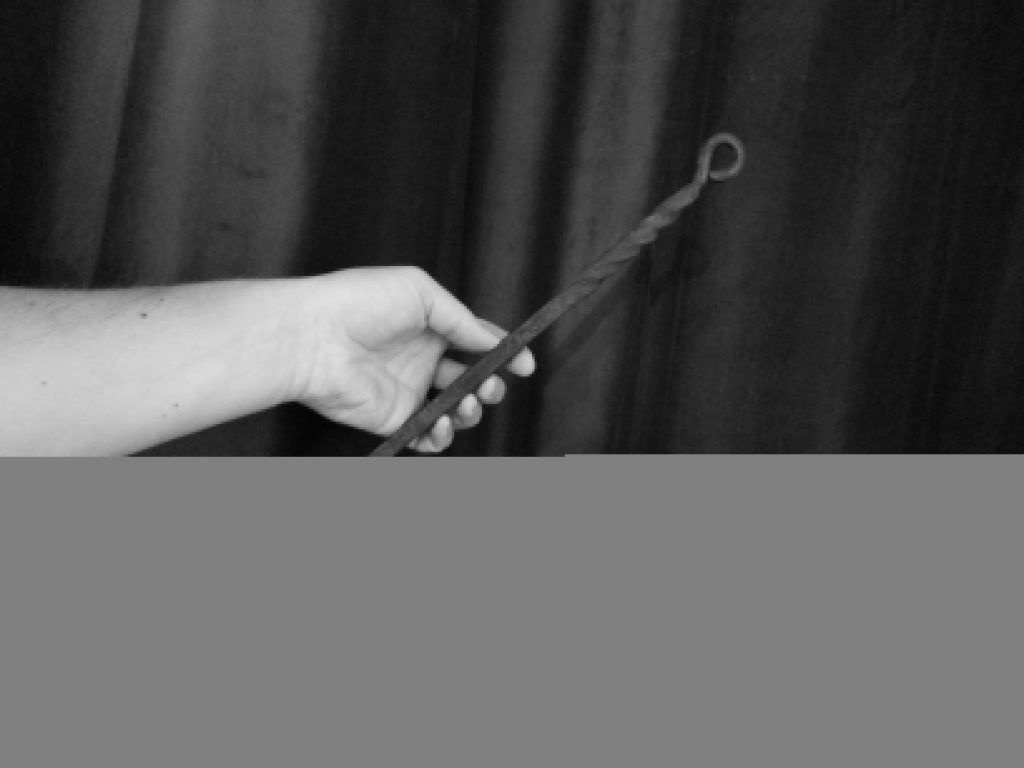
Black smithing sounds fun. Shame you missed out on Mendis though, beats pizza any day!